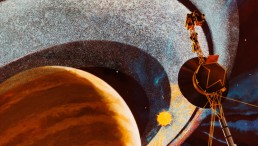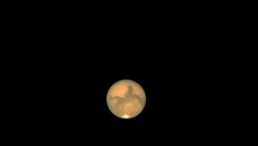During the Late Cretaceous period, one of the warmest periods on Earth, James Ross Island of Antarctica was considered home to a temperate forest of conifers, ferns, and flowering plants also identified as angiosperms. It's home to a slew of dinosaurs, too.
ScienceAlert specifically reported that a new study found a raging wildfire ripped through Antarctica approximately 75 million years ago, when dinosaurs were still roaming this planet.
This report also said it was not complete paradise. Ancient paleo-fires burned parts of the said forests to a crisp, with charcoal remnants being left behind that scientists have now scooped and examined.
According to paleobiologist at the Federal University of Pernambuco in Recife, Brazil, Flaviana Jorge de Lima, the study lead, this new finding has expanded the knowledge on the occurrence of vegetation fires during the Cretaceous period, showing that such occurrences were more typical compared to previously imagined.
ALSO READ: Earth Considered 2020 as Second Warmest Year on Record, NOAA Says
James Ross Island Paleo-Fire
Such a result marks the first evidence on record of a James Ross Island paleo-fire. The said location is a part of the Antarctic Peninsula, now sitting below South America.
Moreover, the discovery adds evidence that spontaneous fires were typical in Antarctica around 84 million to 72 million years ago during the Campanian age.
In separate research in 2015, researchers documented the first identified evidence of dinosaur-age wildfires in West Antarctica.
For this new work published in the Polar Research journal, an international team of researchers examined fossils collected during the 2015-2016 expedition to James Ross Island's northeastern part.
Possibly Burned 'Gymnosperms'
The discovered fossils contained remains of plants that similarly looked like the residue of charcoal, which had weathered away over the last tens of millions of years.
Essentially, the charcoal residues were tiny. The largest paper-thin pieces were only 0.7 by 1.5 inches or 19 by 38 millimeters.
However, scanning electron microscope images showed their identity. The study investigators also found that such fossils are possibly burned gymnosperms, possibly from the Araucariaceae plant species, also known as a botanical family of coniferous trees.
Intense fires in forests were often and widespread during the late Cretaceous period, although most of the evidence for these fires lies in the Northern Hemisphere, with just a few documented cases in the Southern Hemisphere in what's now called Tasmania, New Zealand, and Argentina.
Strong Volcanic Activity
During the said era, the supercontinent of Gondwana was reported to be breaking up, leaving locations like Antarctica more isolated than in the past.
In their research, the study authors noted that the ice-free site had many ignition sources, including lightning strikes, volcanic activity and fireballs from falling meteors, flammable vegetation, and high levels of oxygen, which with of fires.
The team added Antarctica had strong volcanic activity resulting from tectonics during the Cretaceous period, as suggested by the existence of fossil remnants in strata associated with ash falls, California News Times reported.
It is possible that volcanic activity burned the paleo-wildfire that generated the charcoal described in the study. Now, the study investigators are in search of new paleo-fire records in other sites in Antarctica.
Related information about Antarctica discovery is shown on MAD LAB's YouTube video below:
RELATED ARTICLE: Sea Ice in Labrador Sea is Thinning Fast: Should We Worry?
Check out more news and information on Antarctica on Science Times.














